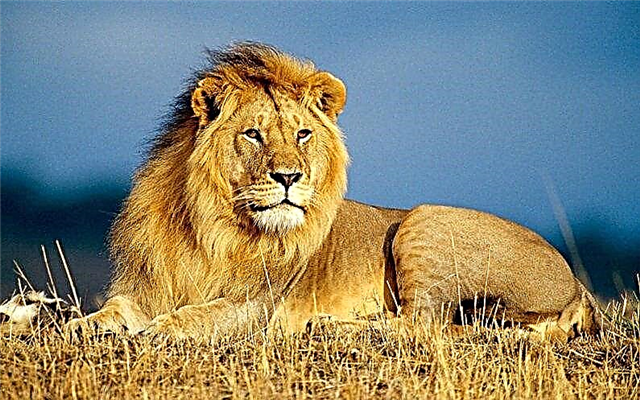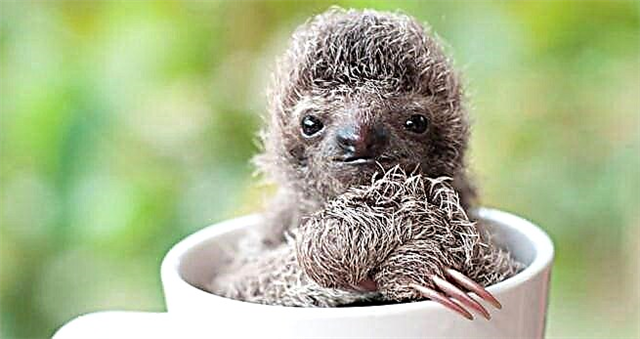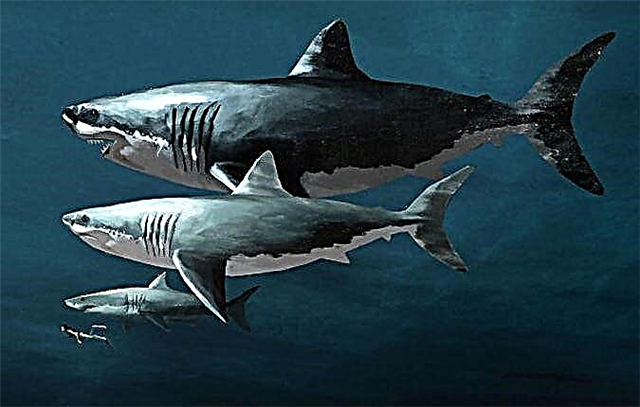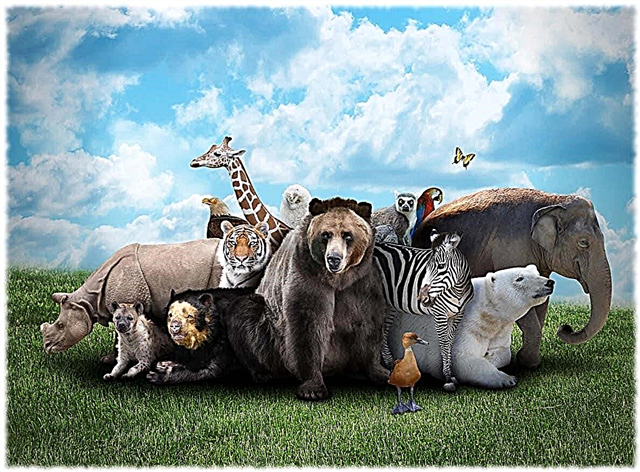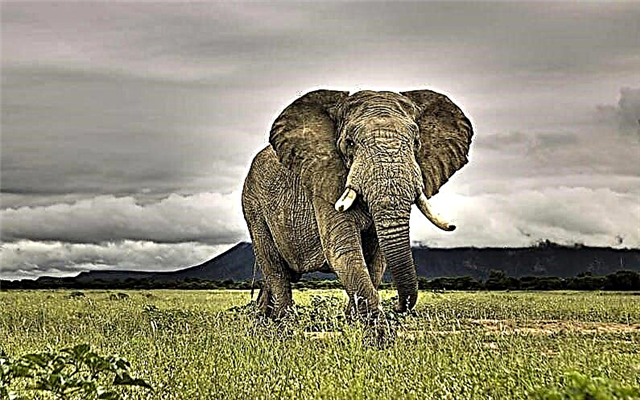
The big panda is a calm mammal, a characteristic black and white color. The panda became the national treasure of China, and for WWF it has become a symbol since 1961.
Panda habitat - which country do they live in

Pandas are prevalent mainly in Asia, east of the Himalayan mountains. At the same time, small pandas are much more common than large ones. Animals are extremely rare, the population of large pandas is limited to the provinces of China: Gansu, Sichuan and Shansi, which are located in the center of the country. The habitat covers about 29.5 thousand km2; however, only a small part can be considered the habitat of pandas.
Interesting fact: panda translates from Chinese as bear cat.
Pandas Habitat

Pandas live in deciduous forests, in mountainous areas. They feed mainly on bamboo, which is why they choose such habitats where it grows. In Tibet and Sichuan province, a lot of bamboo grows, so most of the animals live there. Mountain forests are simply filled with bamboo thickets. Pandas basically live separately, move only for food, systematically chewing leaves and stems of bamboo.
Description
In large pandas, the head has a round shape, the body is well-fed and stocky, and the tail is very short. The shoulders reach 70 cm. Animals have become popular because of the cute muzzle and black marks around the eyes and body. The limbs of the pandas, the abalone, the areas around the eyes are black, the rest of the body is predominantly white. Sometimes pandas may not be with black spots, but with dark red ones. Dark spots give pandas a somewhat naive, gullible look.
Interesting fact: It has long been believed that bamboo bears belong to raccoons.
The shoulders and neck are very wide, but the hind limbs are reduced, so the animals walk in a kind of amble. Pandas have a baculum genital bone, present in some mammals, however, it has an S-shape directed backward. In large pandas, the cranial bones are connected several times, there is a large sagittal crest that has expanded and deepened due to powerful wide jaws.
Interesting fact: the big panda is considered a bear, but the small panda (red panda - raccoon).

The molars and molars are somewhat wider and flatter than the rest of the bearish, which is why pandas can chew on solid bamboo stems. The main remarkable feature of the body structure is the opposed protrusion on the bunch, similar to a thumb. Scientists previously suggested that this skin protrusion is a real finger, there was confusion in the classification of animals.
Interesting fact: For a long time it was believed that pandas had not five fingers, but six. This was due to a small cutaneous growth for breaking bamboo stems.
How much does a panda weigh?
Bamboo bears can grow up to 1.8 meters (full height), weight reaches 160 kilograms, the tail is small, but longer than the rest of the bear representatives - up to 15 cm.
Breeding

Females of large pandas during mating season become much calmer, attract males with a special smell. Several males can compete for a female. Mating games take place throughout the spring. During the most important days of mating games, all the female’s activity passes, they begin to get nervous, stop eating.
Most of the offspring of pandas appear in August-September, pregnant females bear offspring for about 6 weeks. Just born babies are blind, helpless, a thin fur layer covers the whole body. Newborn cubs weigh up to 140 grams. When the baby is born, the mother takes care of him completely, puts him in a comfortable position for sucking milk.

Interesting fact: some time after the birth of a panda, only white.
Feeding a baby takes up to half an hour, and a bear cub may want to eat up to 14 times a day. The eyes open three weeks after birth, animals can move independently only after 3-4 months, and completely weaned from milk at the age of 46 weeks. Cubs remain with their mother for up to one and a half years.

Reproduction in captivity is very bad. Studying the behavioral characteristics of animals in captivity, scientists noticed that predominantly twins are born. However, the mother does not raise both cubs, preferring only one. With a high probability, the second cub dies of hunger.
Why does a panda breed poorly in captivity?
Now pandas are considered one of the most popular animals, they can be called stars of the animal world. The sad news is that there are practically no pandas left on the planet. This is also due to the fact that animals breed poorly in captivity.

Zoologists around the world are trying to solve the problem of breeding pandas. Scientists understand that this task is not an easy one; they constantly study the mating games of bears. We can say that at the moment, panda mating games in captivity have been thoroughly studied. Females can conceive only for several days each year - in March, and males are ready for breeding from January: their hormonal levels change, males constantly mark the territory and so on.
Males arrange battles for the attention of the female, the winner eventually takes care of his female, waiting for her readiness. The most persistent males bother females - they have to escape from them. Females distinguish dominant males by their voice.
Summer is approaching, mating games are gradually stopping, males can no longer enter mating games until next spring. Moreover, in the wild, animals continue to reproduce, and in captivity become modest, may not even show any activity during mating.
Scientists explain this laziness by the fact that in captivity, the male does not always understand whether the female is ready to breed. This is because the animal enclosures are different, there is not much communication so that the male can understand the female’s readiness for conception. In captivity, it is necessary to create special conditions, arrange meetings with animals, during which females will be able to signal to males their readiness.
It is still difficult to establish the exact cause of the weak activity of animals in captivity. The demographic situation of bears is very difficult, so scientists are constantly trying to find out the reasons and correct the situation.
Panda Life Span in the Wild and in Zoos

Big pandas are omnivorous mammals that look like ordinary bears. Animals can live in freedom up to 15 years, sometimes they can live up to respectable ages.
In captivity, pandas can live much longer - from 25 to 35 years. The longevity of pandas in zoos can be explained by the following reasons:
- constant careful care and supervision of the bears, access to food is provided constantly, the diet is balanced, animals receive a lot of vitamins and nutrients from fruits;
- full control over animal reproduction. This is because pandas are listed in the Red Book. The multiplication of animals is very important;
- ongoing care, vaccination of animals from various diseases, solving health problems by highly qualified veterinarians.
The life span of pandas in captivity also greatly affects reproduction - females and males are rare, mostly twins are born, from which one cub survives.
Behavior

Pandas differ from other bears in that they do not hibernate, but with the passage of winter they descend lower and lower to the foot of the mountains. Pandas never build holes on their own, hiding in caves. Animals are not only terrestrial - they swim perfectly, climb mountains.
Most often, large pandas prefer a solitary lifestyle, meet with individuals of the opposite sex only during the breeding season. Females love to play with cubs, they get great pleasure from this, and also soothe babies. Sometimes mothers can even wake up a teddy bear for a game.
What does a panda eat?

The energy reserve is strictly distributed, animals move very little, chew food and get new ones as they move. Big pandas can eat up to 12 hours a day. The main source of energy is bamboo leaves, stems, even roots. An animal can receive only a small part of the nutrients contained in the shoots.
Pandas are also known for taking upright positions when eating. At this point, the front paws can safely hold the stems, and a very comfortable skin outgrowth tears bamboo apart.
The panda has a very muscular stomach, woody food is digested successfully, and a thick layer of mucus protects the intestines from chips and splinters. The diet of pandas is quite extensive, because animals are omnivorous: all parts of bamboo, various fruits, plant shoots, small mammals, fish, and some insects.
Natural Enemies of Big Pandas
On the territory of mountains and forests, pandas do not have many enemies, with the exception of smoky leopards and red wolves. These animals have now become very rare, therefore they do not pose a special threat. Pandas are a protected species listed in the Red Book, the decrease in the number of individuals began mainly due to the activities of people who destroyed their natural habitats.

Thus, pandas have no worse enemies than humans. Bears are extremely friendly towards people, they often let them close to themselves, which is often used by people. They are killed for the extraction of valuable fur, after which it is sold on black markets. Often bears are caught in zoos.
Threats
The black and white color of the pandas protected them from attacks by predatory animals. Bears used to live in regions where snow often fell, so they could safely hide from predators. Now pandas live where snow is very rare, but there are almost no predators carrying threats to pandas. The main threat to animals at all times is man.
Population and species status
Pandas are currently on the verge of extinction, listed in the Red Book. In China there are no more than two thousand bears, the birth rate is constantly decreasing, and poaching, on the contrary, is flourishing in full force. People cut down forests in which pandas can live comfortably. Losing their habitat, animals die. Food sources are also constantly depleted due to people. Bamboo itself can grow for 20 years. The natural death of bamboo also greatly affects pandas.
Interesting fact: the cultural revolution did not affect the preservation of the number of individuals, they continued to be constantly killed, exterminated for the extraction of very expensive fur.
In the 21st century, the last individuals may disappear. Humanity is only now beginning to understand how serious harm it has caused nature. In China, new reserves and zoos are constantly being created, the government introduces new bans and increases responsibility for the harm caused to pandas. However, efforts bring little benefit - animals in captivity breed worse. Each bear cub born is a real pride and merit of scientists.
Big Panda Guard
Big pandas are protected at the legislative level of China. Animals have long been listed in the Red Book, serious punishments for murder even include life imprisonment in Chinese prisons. The country considers pandas to be its national treasure, which should be protected by all means.
Now there are more and more reserves. In zoos, pandas provide better conditions, there they can live much longer than in the wild.The number of bears begins to gradually increase, but the process of at least partial restoration of the population will take more than one decade. Reserves are in central China, in South Korea, in the United States, where pandas also breed. A small increase in the number of individuals leads to the fact that the endangered species has been transferred to the status of vulnerable, which cannot but rejoice.
Interesting fact: Panda is a WWF symbol.

Panda is a unique, interesting animal that lives only in certain areas of the planet. Pandas become characters in various cartoons, the image of an animal is a symbol of world organizations for the protection of nature, for example: WWF - World Wide Fund for Nature. Also, pandas are recognized as the public domain of China.
The role of pandas in the ecosystem
Big pandas live only in places where bamboo grows, which makes up most of their diet. The population of pandas and the amount of bamboo in the territory are closely related. Eating stems, animals distribute bamboo seeds to nearby territories, however, animals are also rapidly reducing bamboo. By this, they themselves complicate their lives. Thanks to protected animal habitats, natural ecological systems are preserved.
Interesting fact: For killing pandas in China threatened with execution or life imprisonment.
Economic value to humans
Positive
Big pandas were constantly poached because of valuable fur. According to some beliefs, a rug made of hide will protect a person sleeping on him from attacks of night ghosts, and also show the near future. In Japan, you can buy a panda skin for a considerable price. Big pandas are extremely popular, zoos get a lot of money, letting people in who want to see strange animals in the area.
Negative
Bamboo bears do not pose any particular threat to the economy due to the fact that they are extremely rare. Of course, the maintenance of pandas in reserves reduces the number of territories that could be used in agriculture, but pandas are too rare a species that brings a lot of money to the state. Therefore, the benefits of animals are disproportionately greater than the negative consequences.



